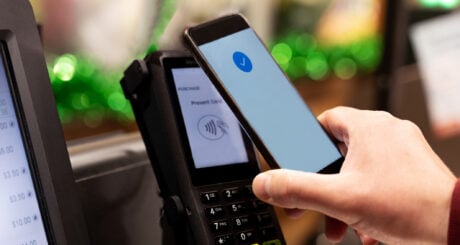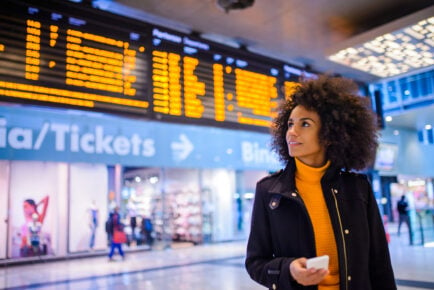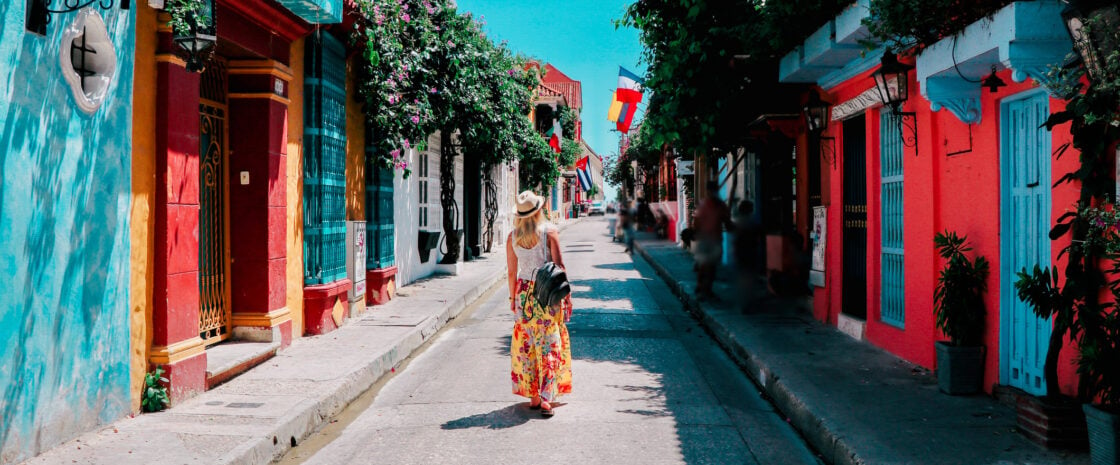A travel money card, also called a prepaid travel card, is a type of card that can hold foreign currencies. It’s intended for overseas travel, and you can use one to withdraw foreign cash from ATMs and to make purchases in a local currency.
How does a travel money card work?
Think of a travel money card as a debit card that uses local currency. Before you use a travel money card, you’ll preload a set amount of a specific international currency onto the card at the day’s exchange rate. For example, if you’re travelling to Italy and France for two weeks, you’d load Euros (€) onto the card and use it instead of your regular debit or credit card during your trip.
You can continue reloading money onto the card via an app or website as you spend your funds. So, if you blow through your Euros in Rome, you can top off your card’s balance before arriving in Paris.
Understanding the value of your exchange
The value you exchange currency for will depend on when you load your funds. Rates change from day to day, but you’ll lock in the rate used at the time you exchange currency. So, you’ll know the exact worth of the foreign currency in Australian dollars every time you use your preloaded card.
On the one hand, a locked-in rate protects you from volatile currencies with fluctuating values. However, if the rate drops, you could be stuck with devalued foreign funds. So, while you can’t predict the future, try to coordinate the load when the exchange rate is most valuable — even if that means waiting a few days.
How many currencies can you load at once?
The number of foreign currencies available will depend on the company providing the card, but you’ll generally find a wide variety of options. Even if dozens of currencies are available, there are typically limits to the number someone can load onto a travel money card. These limits vary by card, but these cards generally only allow for about a dozen currencies at once.
For example, here are common travel money cards and the number of currencies they can support simultaneously:
- Australia Post Travel Platinum Mastercard: up to 11 currencies
- Cash Passport Platinum Mastercard (issued by Heritage Bank): load up to 11 currencies
- CommBank Travel Money Card: up to 13 currencies
- Qantas Travel Money Card: up to 10 currencies
- Travelex Money Card: up to 10 currencies
- Travel Money Oz Currency Pass Travel Money Card: up to 10 currencies
- Westpac Worldwide Wallet: up to 10 currencies.
Other features to compare
The number of currencies available and the ability to load multiple currencies onto one card have obvious advantages: it helps you save on fees and makes it easier to manage your money while travelling overseas.
However, there are other key features to compare when choosing a travel money card.
Fees
Another thing to look for is reduced or waived fees for loading or reloading funds, account keeping, account closing and emergency card replacements.
Be sure to check for any potential fees when accessing leftover foreign funds you didn’t use on your trip, as there may be an unloading fee or an extra charge to withdraw funds and close your account. For example, Travelex charges a $4 monthly inactivity fee when the card hasn’t been used for more than 12 months.
Top-up options
How easy it is to use a financial product is typically important, but simplicity and convenience may feel more essential when you’re on holiday. In that case, options to quickly load or reload funds and notifications when your balance is low can be very helpful. Some cards may allow you to top up your balance immediately and with little cost. With others, you may have to wait a few days and pay a small fee.
Top-up methods also vary. For example, you can use BPAY with certain cards, but not all. Some cards may require you to use a specific app or portal. If convenience and flexible top-up options are important to you, compare options accordingly.
Perks and benefits
Travel perks, such as airport lounge access or the ability to earn rewards, are also great features to look for. Digital wallet compatibility, allowing you to use a virtual version of your card, can also be helpful.
Security and customer service
Security features are also important. Look for a card with a PIN to use at ATMs and the ability to lock the card instantly if lost or stolen.
And, since you’re travelling overseas, 24/7 customer support is essential to ensure you have access to help when you need it.
How to get a travel money card
To get a travel money card, you can go through your bank, an airline, a foreign exchange retailer or a payment merchant.
Prepaid travel card eligibility is comparable to the requirements for a debit card. For example, CommBank requests that cardholders are at least age 14, are registered with NetBank, and provide a valid email and residential address.
You can apply directly on the provider’s website once you choose your favourite prepaid travel money card. Make sure to submit your application at least a few weeks before your trip in case of delays.
» MORE: How old do you have to get a credit card?
Activating the card
Once you receive the card:
- download the provider’s app and familiarise yourself with how it works
- register your account
- activate the card
- convert your money to the chosen currency. You might want to start with a smaller amount for the first part of your trip and reload while overseas or make one big transfer.
While overseas, you’ll likely alternate between paying in local cash and pulling out your travel card. Your goal is to find the best travel card that allows you to pay for items with minimal fees and maximum protections flexibly.
When is a travel money card worth it?
Possible advantages
- Provides access to multiple currencies. Most options allow you to convert Australian dollars into several different currencies simultaneously. That means you can have secure access to a handful of foreign funds during your next multi-country adventure.
- Saves on ATM fees. Credit card holders won’t usually be charged the standard 3% foreign transaction fee or pay extra for in-network ATM withdrawals, loading, and topping up their cards. However, these are just generalisations — each credit card company or bank will have its own fee structure.
- Exchange rates are locked. You’ll pay for the local currency using the exchange rate available when you load funds, which locks in the rate. Having dependable value for your funds goes a long way for peace of mind, especially when travelling.
- Fewer risks when lost. Losing a prepaid card while travelling is undoubtedly a hassle. However, a lost or stolen credit card can mean more risks, like thieves potentially accessing your personal banking details and account funds. Since a lost travel money card is unlikely to result in identity theft and fraud, some travellers find it a safer choice while abroad.
- Helps with budgeting. Trying to keep to preloaded funds may help you stick to a budget while on vacation. Plus, you see the value of money in the local currency, which can help you manage your finances while travelling.
- May come with rewards and perks. Some travel money cards earn frequent flyer points or come with other special travel perks, like overseas customer service. For example, the Qantas Travel Money Card earns Qantas points, and the Westpac Worldwide Wallet prepaid travel money card offers airport lounge access to the cardholder and one companion access when a flight is delayed.
Potential risks
- There are delays when reloading. If you need to top up your balance, you may need to wait up to a few days before funds are available to use.
- Other fees. Some travel money cards may levy typical credit card fees for reloading funds, emergency card replacement, account maintenance, closures, inactivity and more. For example, Travelex and the Australia Post Travel Platinum Mastercard charge a $10 account closing fee.
- Limited acceptance. Travel money cards are less common than other payment options, so you may need help using one for all purchases. So, it’s always a good idea to carry emergency cash.
- Typically lack rewards or major perks. Travel money cards may come with some, but these extras are usually less robust than the offerings on rewards credit cards.
Alternative options
The right travel money card supports a stress-free trip, but you don’t have to use one when travelling overseas — your bank card or credit card could also be a suitable option.
If you’re deciding between a travel money card and a travel credit card, it’s important to understand the differences in how they work.
- Travel money cards are preloaded with foreign currencies, while travel credit cards spend borrowed money. Travel money cards are generally easier to obtain as they don’t require good credit or income thresholds. With a travel money card, you can withdraw funds from an ATM without incurring interest or cash advance fees.
- Travel credit cards don’t usually hold foreign currency but offer perks such as international buyer protections, free insurance, airport lounge access and frequent flyer travel points.
Be sure to consider other important features — such as security, reduced fees and travel perks — to decide if a travel money card is worth it for you.
Frequently asked questions about travel money cards
The available currencies will depend on the card, but you’ll generally find the following options:
- United States Dollars (USD)
- Europe Euros (EUR)
- Great British Pounds (GBP)
- Japanese Yen (JPY)
- New Zealand Dollars (NZD)
- Hong Kong Dollars (HKD)
- Canadian Dollars (CAD)
- Singapore Dollars (SGD)
- Thai Baht (THB)
- Vietnamese Dong (VND)
- Chinese Renminbi (CNY)
- Emirati Dirham (AED).
Most Australian banks — including Westpac, CommBank, ANZ and NAB — have some sort of travel product, whether that’s a travel money card, a travel-friendly debit card or a travel credit card. However, ANZ and NAB no longer offer prepaid travel money cards.
DIVE EVEN DEEPER

How Do I Pay With My Phone?
Instead of carrying your wallet around and pulling it out at check-out, you can just tap your phone, which is always on you, to pay for most things now.

What Is a Travel Credit Card?
Using a travel rewards credit card can help you get your next flight on a discount, hotel upgrades, or even cover the full cost of a trip.

What Is a Frequent Flyer Program Credit Card?
Frequent flyer credit cards earn points or miles that can upgrade your travel and help you score free flights.

How To Lock, Block Or Freeze Your Credit Card
A card lock is essentially an on-off switch that allows you to temporarily freeze or block your credit card and most debit cards.

